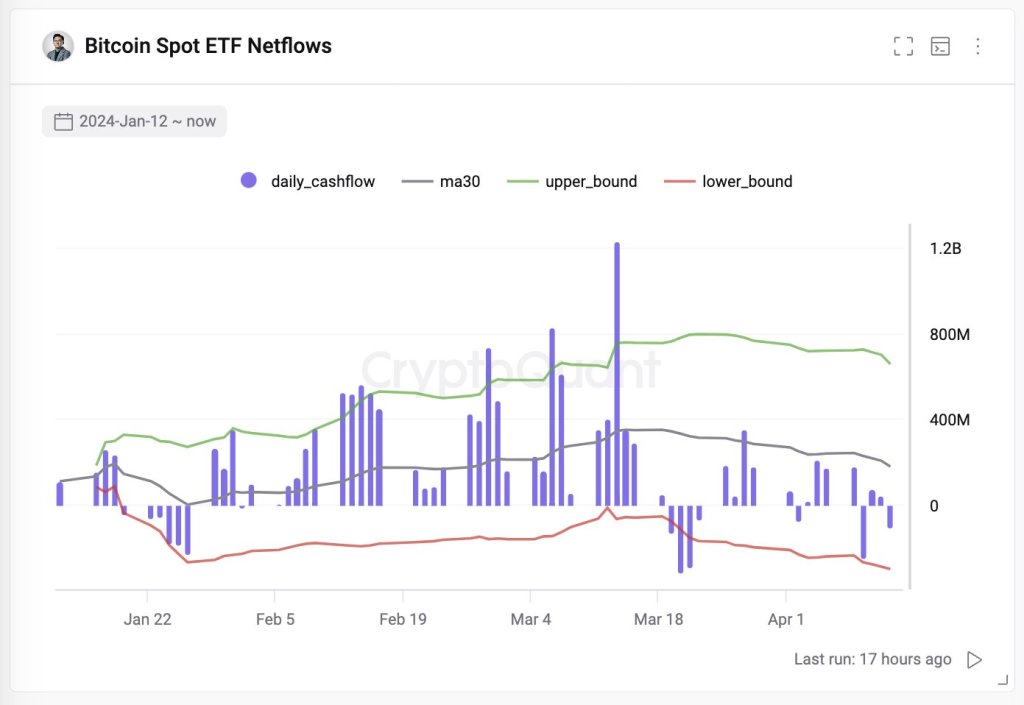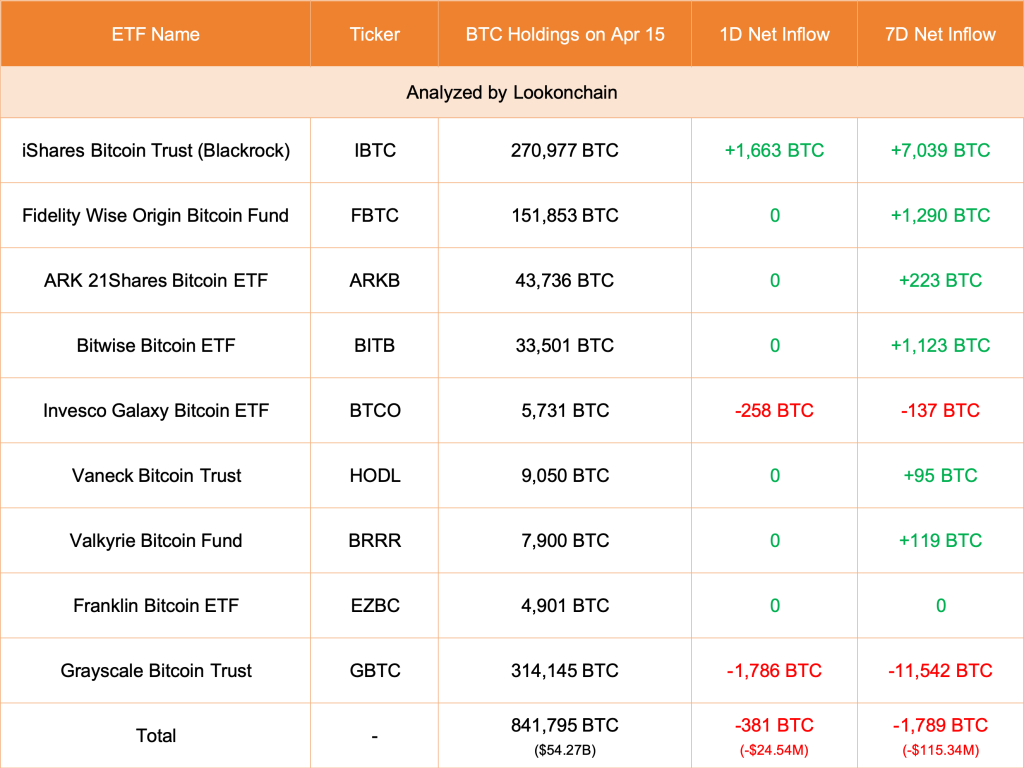Although there has been significant Bitcoin accumulation on cryptocurrency exchanges as indicated by on-chain activity, the desire for Bitcoin exchange-traded funds (ETFs) in the US seems to have slowed down over the past month, based on data from Ki Young Ju, the founder of CryptoQuant. This observation holds true even when disregarding transactions related to ETF settlements.

Spot Bitcoin ETF Demand Slumps In The United States
Investors, including institutions and large Bitcoin holders, can easily gain access to the cryptocurrency market by investing in Spot Bitcoin Exchange-Traded Funds (ETFs). These funds are derivative products that allow investors to benefit from the price movements of Bitcoin without having to deal with the complexities of holding the digital currency directly. Notable ETF issuers like Bitwise and Proshares ensure the security of Bitcoin backing all circulating shares by employing regulated custodians to safeguard the assets.
Despite evidence from comparable data, the demand has decelerated in the past month for Bitcoin trading, with only one US Bitcoin investment fund, iShares Bitcoin Trust (IBIT) by BlackRock, reporting any inflows during the previous two business days.
Based on Farside’s information, IBIT reportedly brought in $73.4 million on April 15. This amount represents a nearly 30% decrease compared to the $111 million recorded on April 14. Meanwhile, all other eight ETFs, aside from GBTC which is undergoing unwinding and conversion into a spot ETF, experienced no inflows during that timeframe.
On April 15, according to Lookonchain data, GBTC experienced a withdrawal of approximately $115 million, while the nine Bitcoin spot ETFs collectively saw withdrawals worth around $25 million.

BTC Remains Under Immense Selling Pressure
The decrease in Bitcoin going into exchange-traded funds (ETFs) that track the spot price of Bitcoin can be linked to uncertain market circumstances. Currently, sellers are dominating the market trend. According to the Bitcoin/US Dollar (BTCUSDT) daily chart, Bitcoin has dropped by 14% since reaching its all-time highs.
Despite the fact that Bitcoin’s price falls between a considerable range, with a floor at $61,000 and a ceiling at $73,800, sellers currently hold the advantage in the immediate future. It is important to mention that the price action remains confined within the bearish candlestick of April 13, which shifts the short-term trend towards sellers based on the effort required versus the result achieved.

If the price of Bitcoin falls below $60,000 and continues to decrease, it’s probable that investors in spot Bitcoin Exchange-Traded Funds (ETFs) will withdraw their funds. This could increase the possibility of Bitcoin dropping further down to prices as low as $53,000 or even $50,000.
Currently, it’s unclear if public opinion will change. Despite Hong Kong giving the green light to several Bitcoin and Ethereum spot ETFs on April 15, their effect on the market is still uncertain. Both Ethereum and Bitcoin are under duress and are inching closer to significant support lines.
Read More
- SOL PREDICTION. SOL cryptocurrency
- LUNC PREDICTION. LUNC cryptocurrency
- BTC PREDICTION. BTC cryptocurrency
- USD ZAR PREDICTION
- USD CLP PREDICTION
- VANRY PREDICTION. VANRY cryptocurrency
- USD COP PREDICTION
- USD PHP PREDICTION
- UFO PREDICTION. UFO cryptocurrency
- RBX PREDICTION. RBX cryptocurrency
2024-04-16 22:12